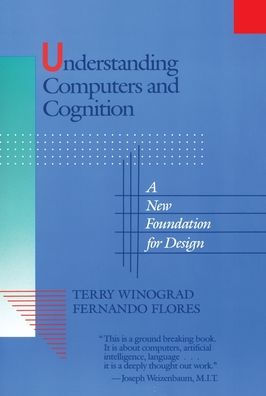| Preface | xi |
| Acknowledgments | xiii |
| Part I | Theoretical Background | |
| 1 | Introduction | 3 |
| 1.1 | The question of design | 4 |
| 1.2 | The role of tradition | 7 |
| 1.3 | Our path | 8 |
| 2 | The rationalistic tradition | 14 |
| 2.1 | The rationalistic orientation | 14 |
| 2.2 | Language, truth, and the world | 17 |
| 2.3 | Decision making and problem solving | 20 |
| 2.4 | Cognitive science | 23 |
| 3 | Understanding and Being | 27 |
| 3.1 | Hermeneutics | 27 |
| 3.2 | Understanding and ontology | 30 |
| 3.3 | An illustration of thrownness | 33 |
| 3.4 | Breaking down and readiness-to-hand | 36 |
| 4 | Cognition as a biological phenomenon | 38 |
| 4.1 | The closure of the nervous system | 41 |
| 4.2 | Autopoiesis, evolution, and learning | 44 |
| 4.3 | The cognitive domain | 46 |
| 4.4 | Consensual domains | 48 |
| 4.5 | The observer and description | 50 |
| 4.6 | Domains of explanation | 52 |
| 5 | Language, listening, and commitment | 54 |
| 5.1 | Listening in a background | 54 |
| 5.2 | Meaning, commitment, and speech acts | 58 |
| 5.3 | Objectivity and tradition | 60 |
| 5.4 | Recurrence and formalization | 64 |
| 5.5 | Breakdown, language, and existence | 68 |
| 6 | Towards a new orientation | 70 |
| 6.1 | Cognition and being in the world | 70 |
| 6.2 | Knowledge and representation | 72 |
| 6.3 | Pre-understanding and background | 74 |
| 6.4 | Language and action | 76 |
| 6.5 | Breakdown and the ontology of design | 77 |
| Part II | Computation, Thought, and Language | |
| 7 | Computers and representation | 83 |
| 7.1 | Programming as representation | 84 |
| 7.2 | Levels of representation | 86 |
| 7.3 | Can computers do more than you tell them to do? | 90 |
| 8 | Computation and intelligence | 93 |
| 8.1 | Why do we ask? | 93 |
| 8.2 | Intelligence as rational problem solving | 95 |
| 8.3 | The phenomenon of blindness | 97 |
| 8.4 | What about learning and evolution? | 100 |
| 8.5 | Can pigs have wings? | 104 |
| 9 | Understanding language | 107 |
| 9.1 | Artificial intelligence and language understanding | 107 |
| 9.2 | The problem of background | 111 |
| 9.3 | Understanding as pattern recognition | 115 |
| 9.4 | What does it mean to understand? | 119 |
| 10 | Current directions in artificial intelligence | 125 |
| 10.1 | The forking of the paths | 126 |
| 10.2 | Expert systems | 131 |
| 10.3 | The fifth generation computer system | 133 |
| Part III | Design | |
| 11 | Management and conversation | 143 |
| 11.1 | Management and decision making | 144 |
| 11.2 | Decision making and resolution | 147 |
| 11.3 | Organizations as networks of commitments | 150 |
| 11.4 | Decision support systems | 152 |
| 11.5 | Tools for conversation | 157 |
| 12 | Using computers: A direction for design | 163 |
| 12.1 | A background for computer design | 164 |
| 12.2 | A design example | 167 |
| 12.3 | Systematic domains | 174 |
| 12.4 | Technology and transformation | 177 |
| Bibliography | 181 |
| Name Index | 191 |
| Subject Index | 194 |



